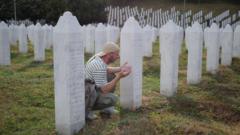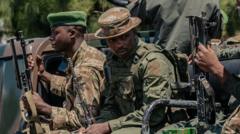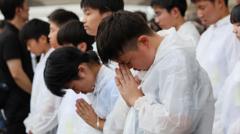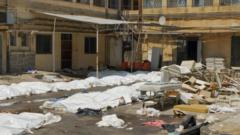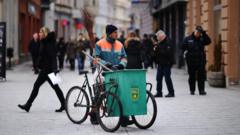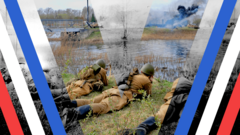The silence is ruptured by piercing screams as individuals frantically sift through the soil, revealing remnants of the past—watches and sandals belonging to the victims of the infamous Srebrenica massacre. "Flowers of Srebrenica," a play premiering at Sarajevo's War Theatre, serves as a poignant reminder of not only the events of July 1995 but the persistent impact of unresolved grief and socio-political divisions in Bosnia and Herzegovina.
In July 1995, Bosnian-Serb forces executed what remains the most horrific war crime in Europe since WWII, murdering over 8,000 Bosniaks, predominantly men and boys, who believed they had found sanctuary under UN protection in Srebrenica. Tragically, Dutch peacekeeping troops stood by as General Ratko Mladić directed the deportation of women and children, while directing the systematic execution of the men.
The aftermath was further complicated as bodies were buried in mass graves, only to be exhumed and scattered in multiple locations, amplifying the anguish of families seeking closure. Some have had success in identifying remains through personal belongings or DNA testing, but many still search for their loved ones decades after the atrocities.
The performance of "Flowers of Srebrenica" emphasizes the pain of personal loss and how it interweaves with the broader cultural and political fabric of contemporary Bosnia. Audience members responded with a standing ovation in Sarajevo, contrasting sharply with the sentiments of political leaders in Republika Srpska, where the genocide is actively denied. This denial persists despite the international courts' verdicts against Mladić and political leader Radovan Karadžić.
The anniversary of the massacre highlights the ongoing divisions established by the Dayton Peace Agreement, which ended the conflict but split the country into two entities primarily divided along ethnic lines. While the Federation is home to most Bosniaks and Croats, Republika Srpska is predominantly Serbian. The local governance structure largely consolidates power at the entity level, resulting in a fractious political landscape.
Recent actions by Milorad Dodik, Republika Srpska’s president, exacerbate tensions, leading to conflicts with Bosnia's High Representative and legislative challenges. The landscape lies fraught with reminders of the conflict as public sentiment appears to sway dramatically between remembrance and denial, with citizens in Sarajevo paying homage, while nearby, sentiments of unacknowledged grief persist.
With the specter of historical grievances being wielded for political gain, citizens like Mirela Osmanović express deep concern for their safety and future. In her role at the Srebrenica Memorial Centre, she voices fears of returning to the animosities of the 1990s, being pointedly aware of the political rhetoric that seeks to undermine collective memory and reconciliation.
As memorials even in tumultuous weather draw crowds together to pay respects, the divide remains stark. Dodik’s narratives signal unrest, leading to a growing fear that the unresolved pains of the past could sabotage future attempts for healing and unity, leaving many anxiety-ridden about what lies ahead in a nation still grappling with its history.

